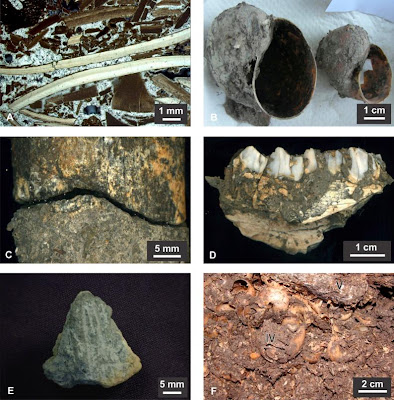The enigmatic ‘forest islands’ set
amidst the grasslands of Bolivian Amazonia have yielded the earliest
evidence of human habitation in the region. Previously thought to be
relict landforms cut away by shifting rivers, or long-term bird
rookeries or termite mounds, these piles of freshwater snails, animal
bones and charcoal are now known to have been built up over millennia,
starting from at least 10,400 years ago, by ancient hunter-gatherers.
Using novel approaches drawn from
archaeology, geomorphology and geochemistry, an international team of
researchers, led by Dr Umberto Lombardo of the University of Bern, has
conducted detailed excavations of a large mound known locally as Isla
del Tesoro (Treasure Island).
Associate Professor Katherine Szabó
from the University of Wollongong’s Centre for Archaeological Science
and Dr Jan-Hendrik May from UOW’s School of Earth and Environmental
Sciences were among the international team members.
Distinctive chemical signatures of
human presence were recorded at high levels throughout the mound
sediments, and studies of the animal bones and shells indicate they are
the remains of ancient human meals. Team members said that Isla del
Tesoro tells us that from over 10,000 years ago, hunter-gatherers were
moving across the grasslands hunting a variety of mammals, catching fish
and birds, and gathering large quantities of freshwater snails.
Over time, the refuse of these
hunting and gathering forays built up forming mounds, which sat elevated
above the floodplain. These refuse or ‘midden’ mounds in turn provided a
habitat for local plants and animals, transforming them into the forest
islands so recognisable in the landscape today. It is highly likely
that many more midden mounds lie buried beneath the metres of silts
under the current savannah, according to the researchers.
Regularly flooded savannah
landscapes such as those surrounding Isla del Tesoro have long been
thought to be an inhospitable environment for early hunter gatherers.
The densities of animal prey are lower and less predictable than in
coastal areas, near stable watercourses or in forested areas where early
South American archaeological sites are typically found. Dr Lombardo
and colleagues’ work at Isla de Tesoro tells us that early South
Americans moved across a wider variety of landscapes than previously
thought, and adapted their ways of life to cope in these challenging
environments.






No comments:
Post a Comment